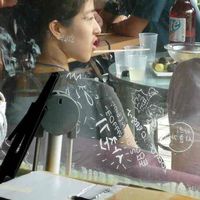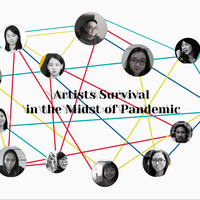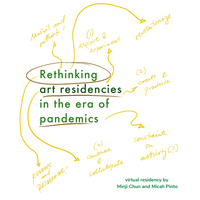#peripheries: Suncheon Urban Regeneration Art Village | Korea

This month, culture360.ASEF.org is starting a new series of articles on the topic of #peripheries. The #peripheries have been regarded as being in the geographical margin, distant from the capital cities and cultural centres of countries. With an ongoing decentralisation trend, through this series of articles, we will look at various arts endeavours by artists, cultural professionals and art organisations who operate or occupy the peripheries in an urban society and the role that the arts play. In this article, Minji Chun writes about the Suncheon Urban Regeneration Art Village, established for the purpose of cultural revitalisation for the southern part of Korea.
Suncheon, a city located in the southwest of South Korea, is well known for its breathtaking natural environment such as the Suncheon Bay Wetland Reserve, one of the World’s five coastal swamps. For the last few decades however, it has been quite difficult for people to think of representative attractions of the city, apart from the bay. In this regard, since 2013, Suncheon has started to devise various cultural methods for urban regeneration. Thanks to this effort, the city four hours away from the capital, has now become one of the renowned residency sites for Korean artists who need an inspirational work environment.
The Suncheon Art Village was created as a part of the Suncheon City Urban Regeneration Project, with the aim of revitalising the downtown area, expands the diversity of citizens' voluntary cultural activities and culture and arts programs. The residency program actively encourages creative works by providing artists with adequate workspaces, networking opportunities as well as artists’ fees and complimentary annual tickets to the Suncheon Bay.
In this article, operating team manager of Suncheon Art Village Dohyuk Kim shares his view about the Village, a residency based in the ‘non-metropolitan area’.
Minji Chun (MC): As we are all aware, the Korean contemporary art scene is heavily concentrated in the metropolitan area near Seoul. What would be the role of Suncheon Art Village as a non-capital artist residency?
Dohyuk Kim (DK): As one of the main projects for urban regeneration of Suncheon, the village focuses on artists-in-residence who could implement community-engaged art projects and reinterpret the locality of this city. We are aiming to create an atmosphere of communication between art and community; we also want every visitor to engage in creative activities in their daily lives. In other words, our programme is more than just encouraging artists to continue their own works for several months.

Exhibition at Suncheon Urban Regeneration Art Village
MC: This means that participating artists could be the main agents of community, who lead the citizens through arts. For instance, they seem to be actively communicating with the local residents through some programmes such as 'Art Village Open Studio', ‘Up-cycling Art Workshop’, 'Residency Festival' or ‘Sharing the Kitchen’. How do you evaluate each program and the community’s artistic scene today?
DK: We offer diverse programmes with selected artists-in-residence every year. For this year, we are funding three artists-in-residence working in the area of installation art, musical and up-cycling art. As with other residencies, we open the 'Room of the Artist' on the second floor of our building to present exhibitions from time to time. But what should be noted about the residency program, which is currently in its third year, is that it has selected a wide range of artists over time. We are trying to share this extended artistic scope with community members. Each programme planned by our selected artists has interpreted the city’s aspects in various ways.

Exhibition View at Suncheon Urban Regeneration Art Village
DK: Artists are conducting community-based activities within their areas of specialisation. For instance, some artists used a small garden to cultivate and harvest crops with the community members, creating opportunities for sharing and communication. Artists also participate in civic community events such as local festivals and cultural events. Last year, two artists from Thailand who participated in the short-term residency and the artists-in-residence gathered to run a program called ‘One minute portrait’. I would say it was a great chance to explain naturally about the Suncheon Art Village to the citizens. There were many other workshops besides the ones mentioned above, which were conducted in collaboration with artists. They are not limited to the visual arts field.

‘One-minute portrait’
MC: Lastly, how do you want the residency to contribute to the city, in terms of urban regeneration and cultural revitalisation?
DK: This residency is also an attempt to restore the living system of residents with abundant cultural resources and imaginative stories of our community. Urban regeneration involves not only the city itself, but also everything that restores the home of those who live here. Redevelopment in terms of architecture or structure could be solved by the capital, but the collapse of the community caused by people's emotional deprivation is not easy to solve. Since culture reflects people's values, we are trying to approach the community with art, which is also based on people's lives. When the programmes I previously mentioned lead to reconstruction of the community, improvement of the quality of life, and restoration of relations, this residency will be referred to as a successful result of cultural revitalisation.
The small building that was once a butcher in the old downtown was newly born. Now at the community-centered art space, citizens can enjoy arts and culture whenever they want. Such efforts of the Suncheon Art village to solve the regional imbalance and to embrace the community by forming a bond between the artists and the residents clearly show the social function of arts and culture. Despite its geographical location, it seems that Suncheon’s Renaissance has already started with an eye-catching change of the local art scene.
To find out more about Suncheon Urban Regeneration Art Village:
Suncheon Urban Regeneration Center http://urc.sc.go.kr/scurc/
Suncheon Urban Regeneration Art Village https://blog.naver.com/scartvillage
Images provided by Dohyuk Kim
This article is written by Minji Chun, an arts writer, curator and translator based in Seoul. She is currently working as an editor of TheArtro (www.theartro.kr), a platform for Korean contemporary art by the Ministry of Culture of Korea and Korea Arts Management Service. Her projects were funded by several institutions, including the Ministries of Foreign Affairs of France and Japan and Korea, the Ministry of Culture of Korea, Seoul Museum of Art, and Seoul Foundation for Arts. Minji graduated from Yonsei University as a valedictorian, double-majoring in French literature and digital arts. She earned her Master’s degree in art management from Seoul National University.
Similar content
deadline
22 Jul 2011
from - to
27 Oct 2017 - 31 Oct 2017






